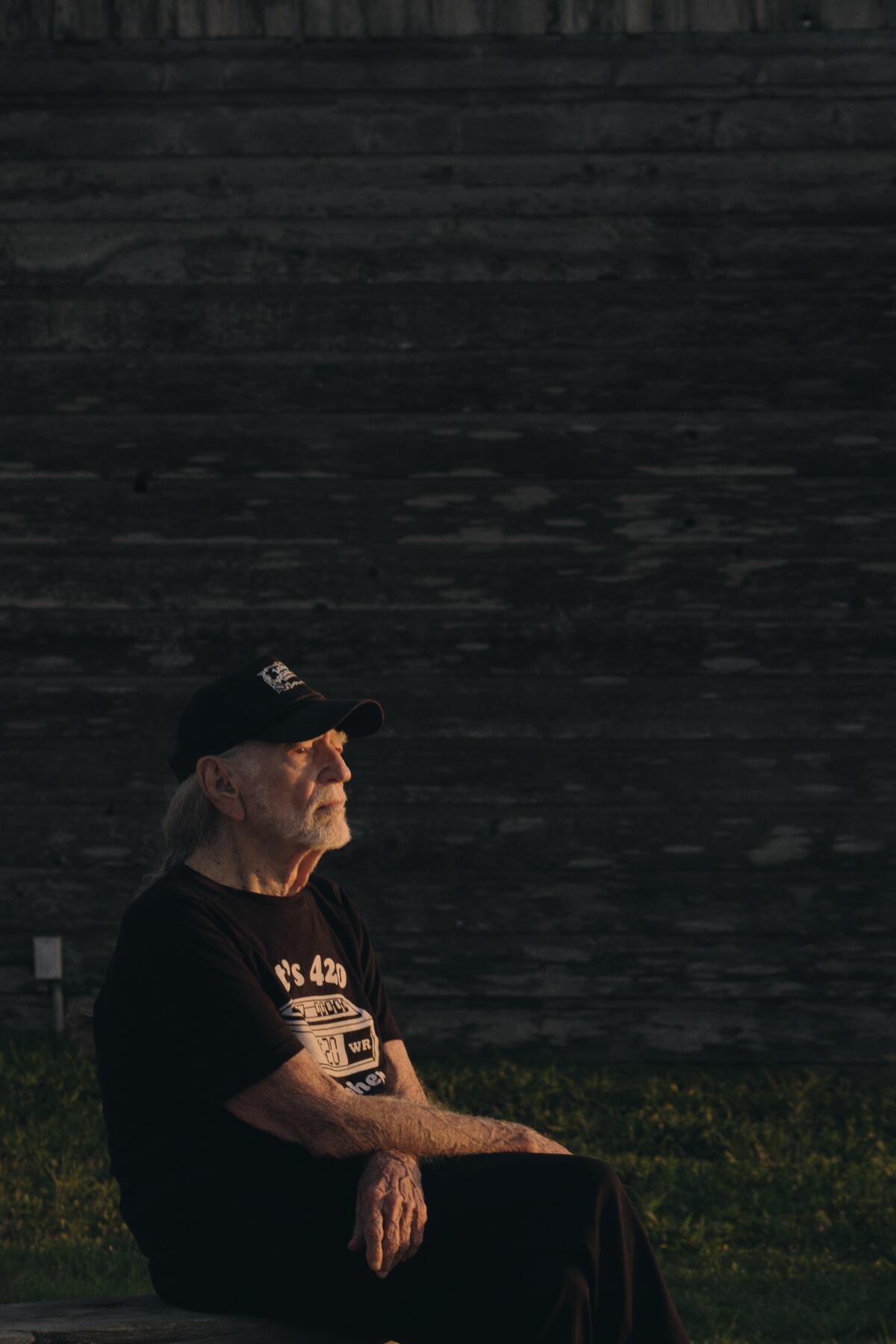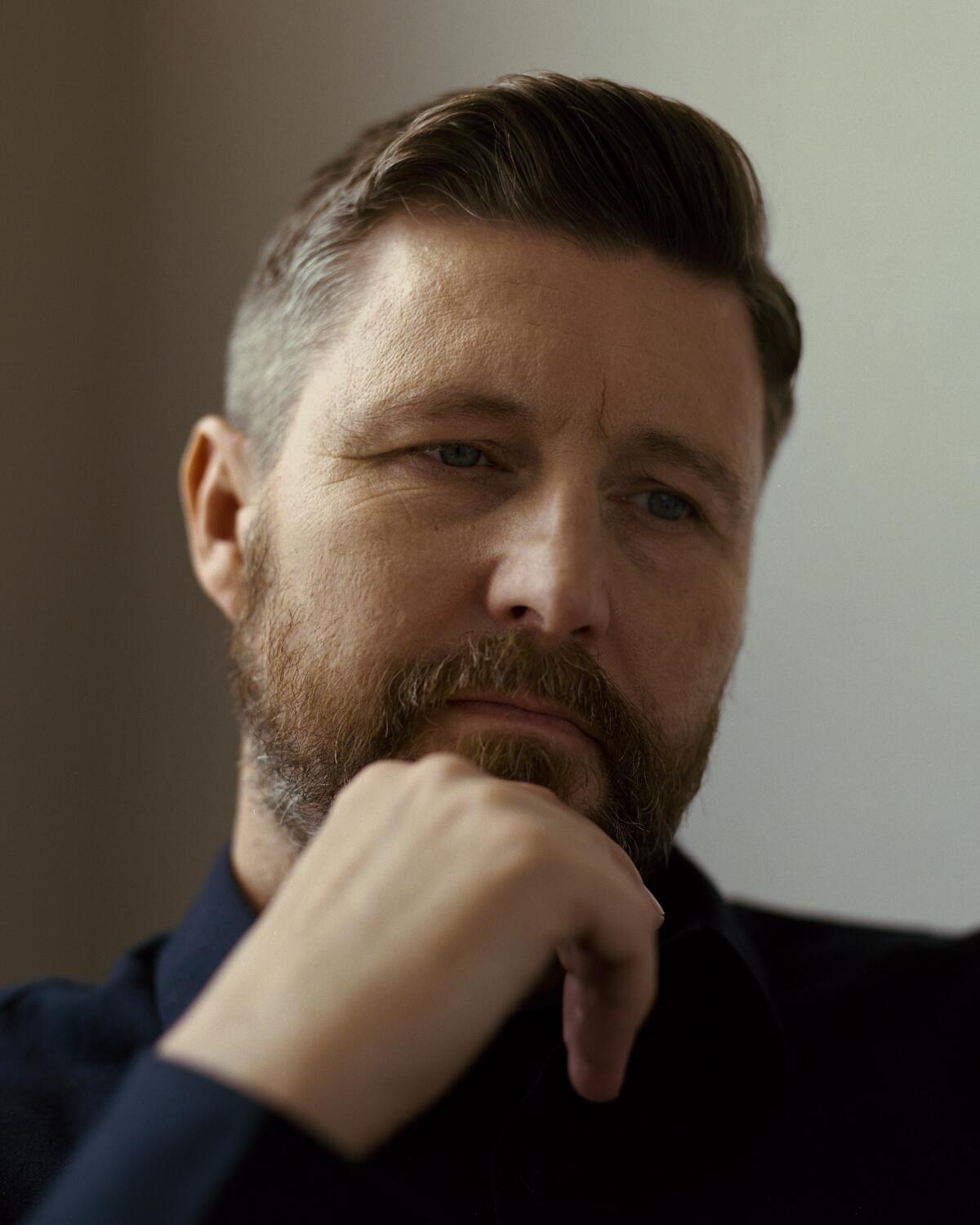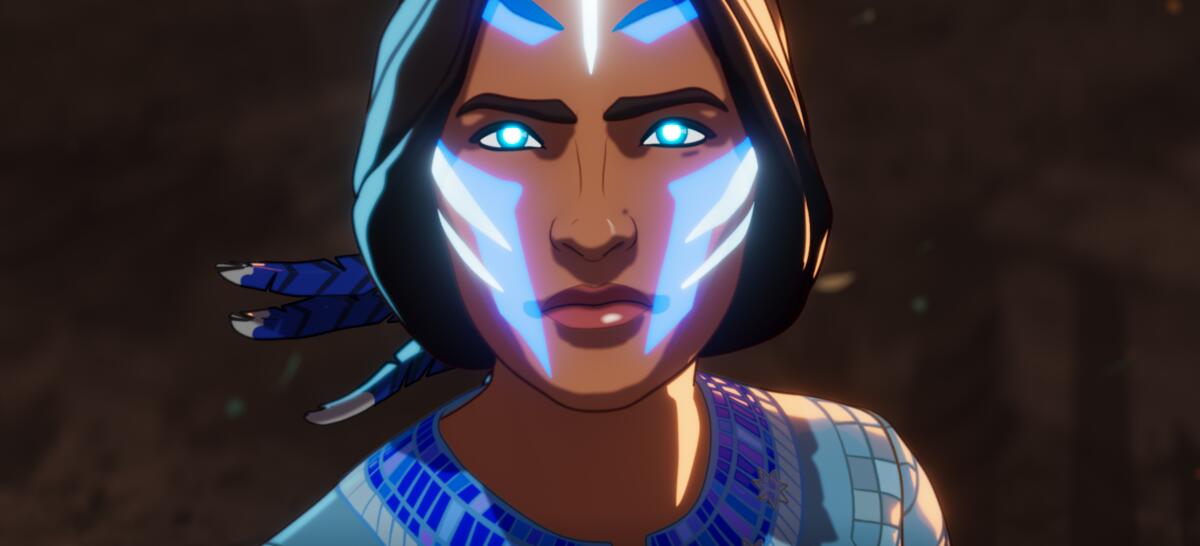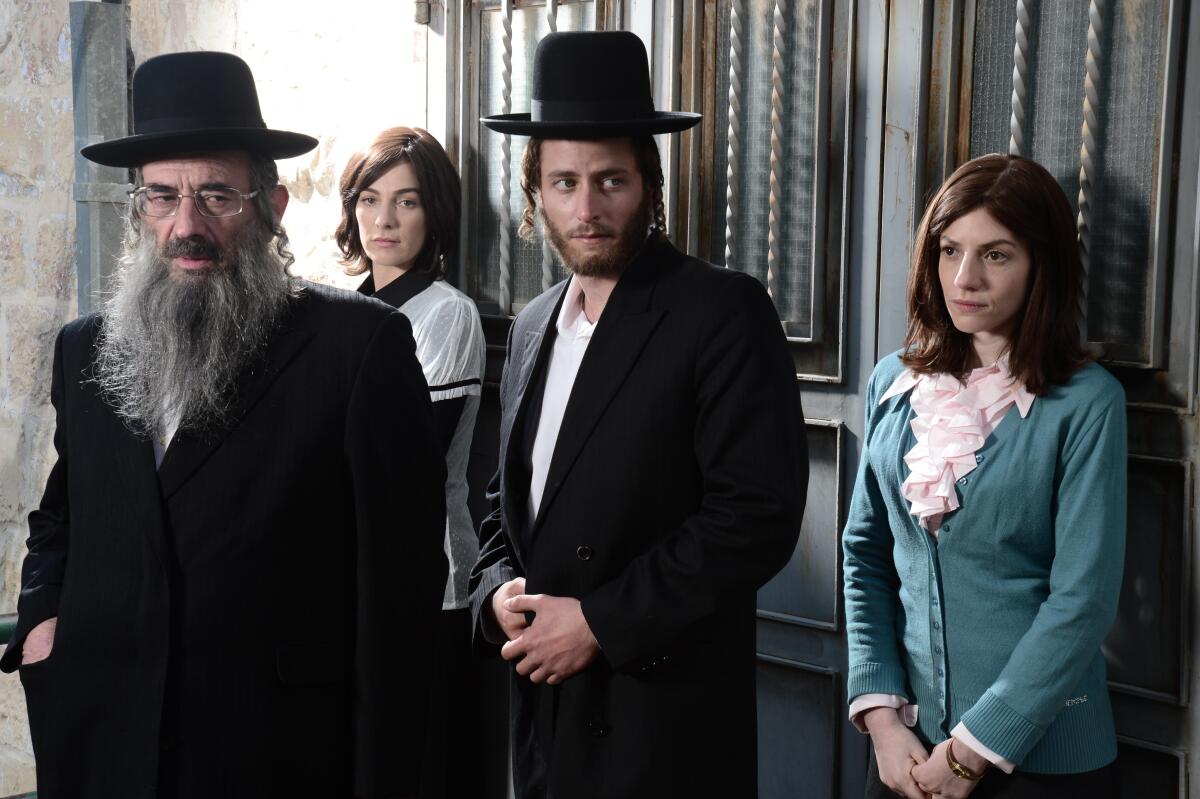An in-depth look at Willie Nelson, a new ‘Dr. Death’ and more to watch this weekend

- Share via
Welcome to Screen Gab, the newsletter for everyone who needs something to pass the time this holiday weekend.
In Screen Gab No. 112, we recommend a Willie Nelson docuseries and an animated entry in the Marvel Cinematic Universe, ask guest Jennifer Morrison about directing and executive producing on the new season of “Dr. Death,” and more.
You are reading Screen Gab newsletter
Sign up to get recommendations for the TV shows and streaming movies you can’t miss, plus exclusive interviews with the talent behind your favorite titles, in your inbox every Friday
You may occasionally receive promotional content from the Los Angeles Times.
ICYMI
Must-read stories you might have missed

My journey to the heart of Andrew Haigh, the director behind the year’s best film: The misunderstood auteur of “Weekend,” “Looking” and “All of Us Strangers” opens up about coming out, facing critics and making some of the movies’ hottest sex.
The 40-year fight over the queer love story in ‘The Color Purple’: Steven Spielberg, a Broadway show and now a movie musical all have tried to capture the queer love story in Alice Walker’s novel. Here’s how they did it — and why some argue they’ve all failed.
With a drink and a smoke, playing ‘glorious’ Princess Margaret was thrilling, Lesley Manville says: The English actor spoke about portraying Margaret in Seasons 5 and 6 of “The Crown,” and what it was like to film after the news of Queen Elizabeth II’s death emerged.
What will happen to the MCU without Jonathan Majors? How Marvel might shake things up: Jonathan Majors was expected to play a key role in the Marvel Cinematic Universe as villain Kang the Conqueror. Now that Marvel has cut ties with the actor, we look at what it means for the franchise’s future.
Turn on
Recommendations from the film and TV experts at The Times

“Willie Nelson and Family” (Paramount+)
In the age of streaming and self-promotion, there is no dearth of celebrity documentaries whose length seems disproportionate to their subject. But sometimes the subject merits a long look, especially if he’s 90 years old and has been busy making art nearly the whole time. Like nearly every such film nowadays, “Willie Nelson and Family” (Paramount+ ) is “authorized,” which is not necessarily to say sanitized — this isn’t quite a hagiography, but there’s no reason for it not to be a celebration, given how beloved is the subject, how great his impact on music and culture and the Zen-like state of happiness he emanates. Nelson lived his share of country music dysfunction, acknowledged here, but the more important story is of an outsider becoming, not an insider, but honored for going his own way. Wives and children, bandmates (including his late sister and pianist, Bobbie Nelson), longtime associates and country music stars of several generations testify, to the good, the less good and a thing or two Nelson is less ready to admit. Most important, it describes and displays his special gifts as a songwriter, instrumentalist and a singer of every sort of American song. And he does card tricks. — Robert Lloyd

“What If...?” (Disney+)
The second season of “What If…?” is a reminder that sometimes, it can be fun to ponder the endless possibilities of the multiverse. As implied by the title, Marvel’s animated anthology series offers glimpses into alternate worlds where familiar characters such as Nebula and Peggy Carter are living slightly different lives. But what I’m looking forward to in this new batch of episodes is a story introducing a brand-new hero: Kahhori. This season’s sixth episode is set in a world where the Tesseract — a powerful object that has played a key role in various Avengers outings — lands in an America that hadn’t been colonized. This sets up Kahhori, a young Mohawk woman, for a journey to discover her superpowers. The episode will mark a number of Marvel firsts, including dialogue that will be entirely in Kanienʼkéha, the Mohawk language. (The nine-episode second season premieres Friday, with one new episode released nightly.) — Tracy Brown
Catch up
Everything you need to know about the film or TV series everyone’s talking about

When we launched our Ultimate Guide to Streaming earlier this year, replete with a power ranking of the major platforms and a guide to boutique streamers, we knew at the outset that it wouldn’t be the last word on the subject: New companies, with distinct business models, genre interests and target audiences, pop up in this space seemingly every day.
Enter ChaiFlicks, launched in August 2020 by Angelenos (and spouses) Neil Friedman and Heidi Bogin Oshin, as well as former New Regency executive Bill Weiner. The service capitalizes on the increasing popularity of Israeli TV productions and co-productions — and international TV series more broadly — in recent years, including titles such as “Fauda,” “Our Boys,” “Tehran” and “Losing Alice.” In its first significant programming coup, ChaiFlicks earlier this month became the exclusive U.S. streaming home to Yes Studios’ “Shtisel.” That series, which follows the lives of yeshiva teacher Shulem Shtisel (Dov Glickman), son Akiva (Michael Aloni) and the rest of their Haredi family in an ultra-Orthodox neighborhood of contemporary Jerusalem, broke big on Netflix in 2019, not least, as The Times’ Jeffrey Fleishman wrote, by “demystifying religious orthodoxy” with some of the same storytelling tools as “This Is Us.”
ChaiFlicks isn’t all “Shtisel,” either. Its catalog of Jewish-themed films and TV series, drawn from that of Friedman’s distribution and international sales company Menemsha Films, points to the new avenues that specialty players are likely to pursue in a changing technological landscape and foreign/art-house market. Just another reason we’ll have to make space for an even bigger streaming guide next time around. — Matt Brennan
Guest spot
A weekly chat with actors, writers, directors and more about what they’re working on — and what they’re watching

Chances are you know Jennifer Morrison for her work in front of the camera, as “House” protégé Dr. Allison Cameron or long-lost fairy tale character Emma Swan in “Once Upon a Time.” These days, though, Morrison may be picking up credits fastest behind it, helming episodes of “Euphoria,” “One of Us Is Lying” and “Grease: Rise of the Pink Ladies,” among other series. But it’s with Peacock’s “Dr. Death,” whose second season premiered Thursday, that she’s forged the closest relationship as a director (and executive producer). This time around, the anthology series takes on the tale of disgraced Italian surgeon Paolo Macchiarini (Edgar Ramirez) and Benita Alexander (Mandy Moore), the investigative journalist in pursuit of the truth about him. Morrison recently stopped by Screen Gab to discuss the dangerous appeal of charismatic doctors, what she’s watching and more. — Matt Brennan
What have you watched recently that you are recommending to everyone you know?
I have two very different recommendations. I recently watched “My Brilliant Friend” on HBO. I know it isn’t new, but I loved the novels by Elena Ferrante and it was incredible to watch the novels come to life. It’s a slow burn, but I do enjoy a slow, beautifully made show from time to time.
I also love “Welcome to Wrexham” on Hulu. It is incredible what the show has done for the town of Wrexham as well as the town’s soccer team. The show is a feel-good watch that reminds you that good things can still happen.
What is your go-to “comfort watch,” the movie or TV show you go back to again and again?
One of the films that I return to over and over again is “The Graduate” [Roku, Tubi, Pluto, Freevee]. I love the intentional filmmaking. I love the soundtrack. I love the performances, and I love when films are slightly totally stylized but still grounded. Whenever I feel stuck as a filmmaker, I do a proper rewatch and I always find myself reinspired.
What’s a directing do (or don’t) that you picked up as an actor, and what was the experience that brought it about?
I think the most important thing I have observed and continue to observe about directors while I am acting is the value of preparation. The more prepared you are, the freer you can be in the moment, the clearer you can be with the actors and the crew, and the more time you have to troubleshoot when unexpected things happen.
Between a long stint on “House” (an all-time favorite of mine) and this season of “Dr. Death,” you’ve had plenty of experience with stories about charismatic, and problematic, surgeons. What do you think makes characters like Gregory House or Paolo Macchiarini capable of getting away with crossing the line the way they do for so long?
I would definitely not put Dr. House in the same category as Paolo Macchiarini. House is not gentle in his bedside manner, but he ultimately always puts the patient first. Paolo was experimenting on humans with the hopes of financial gain and fame. It is baffling to me that top institutions are not vetting someone like Paolo more carefully. It shows you how persuaded we all can be by charisma and hope. Institutions are just groups of people. And people are all fallible and vulnerable in different ways. We like to think institutions are stronger than human flaws, but they are just a collection of people who are both talented and flawed. People like Paolo know how to manipulate the flaws for their own gain. Paolo’s case also reveals how far people will go to try to sweep a problem under the rug. If institutions and people were more willing to take responsibility for their mistakes, we would not have someone like Paolo getting past his first failed transplant.
The complete guide to home viewing
Get Screen Gab for everything about the TV shows and streaming movies everyone’s talking about.
You may occasionally receive promotional content from the Los Angeles Times.



